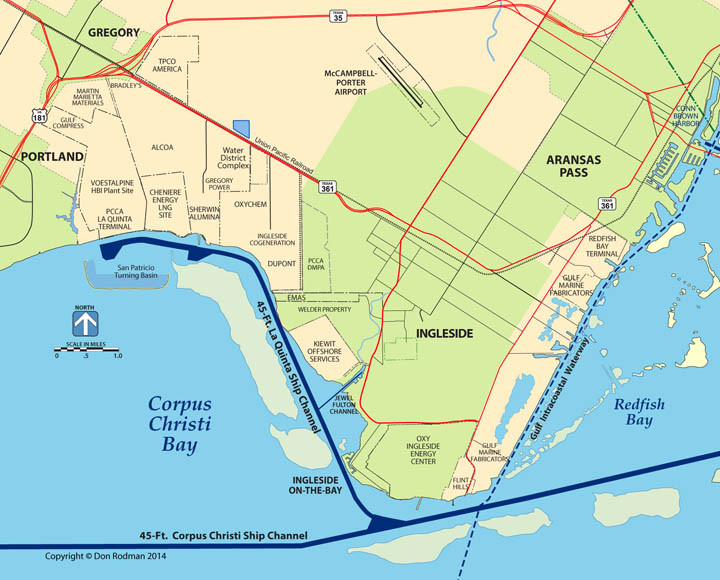Airports
County Airports
Need to come in on business? Don’t want to deal with bogged-down airports? Whether you travel to the county for business in our energy, manufacturing and chemical sectors, or for our great freshwater and saltwater fishing, San Patricio’s two county airports can get you here. County airports offer a spectrum of stress-free access to courtesy cars, available hangar rental space and aircraft maintenance shops. Both airports have Jet A and 100 LL fuel for purchase. All you have to do is fly in, tie down and hit the town!
Rail
Railroads have been important to Economic development in San Patricio County since the first train arrived in the late 1800s, and will continue to play a vital role in the success of county industries.As interest in property along the La Quinta Ship Channel increases, access to efficient rail transportation has become more important than ever. Due to the county’s close proximity to the Port of Corpus Christi and its Terminal Railroad, San Patricio County industries enjoy access to shipping by rail to anywhere in the United States via three Class 1 railroads – Union Pacific, Kansas City Southern and BNSF.
For the last five years, San Patricio County has seen an average movement of 30,000 – 35,000 railcars per year. Due to heightened activity in the last decade, and projections for even higher demand, the port’s 2012 Rail Master Plan includes a conceptual route for a new rail line serving the La Quinta Channel, which would increase capacity and efficiency.
The Union Pacific Kosmos Industrial Lead serves industries along the La Quinta Ship Channel. Commodities moving by rail on this line include crushed limestone, silica sand for fracking, alumina hydrate, alumina, lime, chlorine, vinyl chlorine, refrigerants, other specialty chemicals and steel. This has also been an important rail line for transporting wind energy materials and military equipment. The line serves major San Patricio County industries including OxyChem and Chemours,voestalpine. With the number of Tier 1 companies already receiving rail service, and billions of dollars in new development under contract, rail providers see the advantage of serving San Patricio County businesses, and cooperatively work with local officials to meet the demands of San Patricio industries.
Experts project an increase in the number and length of trains moving cargo through South Texas in the next five years. In consideration of safety and quality of life, the San Patricio Rural Rail District has been working with leadership from the port and city officials to identify and promote several projects that would move train tracks away from the center of town, to outer lying areas.
Rail development remains a priority issue in San Patricio County, and the EDC is committed to working with the San Patricio Rural Rail District to make sure future rail projects are implemented, taking into account the interests of businesses, homeowners and other stakeholders.
Roads and Highways
Public Transportation
Corpus Christi Regional Transportation Authority (CCRTA) The ‘B’
CCRTA provides public transportation throughout Nueces County and portions of San Patricio County including the cities of Corpus Christi, Robstown, Port Aransas, and Gregory. The CCRTA service area covers 830 square miles and provides transit service that supports more than 6 million boardings per year. The service operates 7 days a week depending on the route, except Christmas, Thanksgiving and Easter.
In addition to fixed route bus services, the CCRTA provides commuter service to employees of the Naval Air Station and The Corpus Christi Army Depot. The CCRTA also assists citizens and businesses in creating customized vanpools and rideshare programs. You can view the CCRTA’s map of routes here.
CCRTA also provides a service within the region called Demand-Response – a curb-to-curb service for qualified individuals with a disability.
For information about routes, schedules or customer service topics, please view the CCRTA website or contact the CCRTA Customer Service Center at (361) 883-2287.
